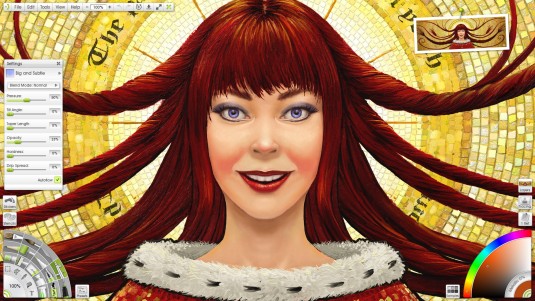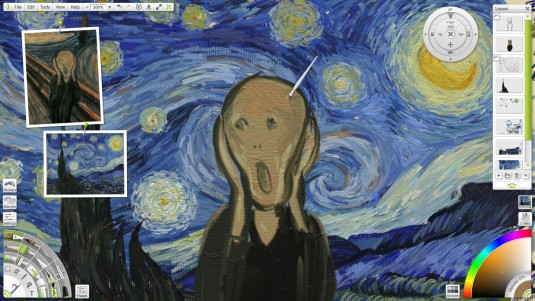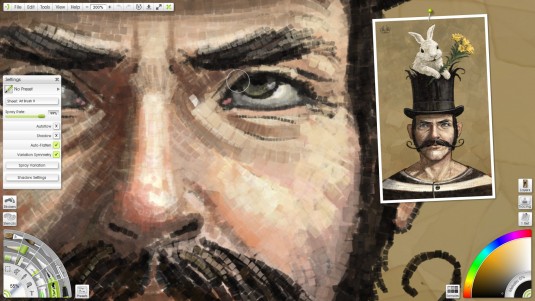Other features improve the process of working on the screen as if it were art canvas.
A new release of Art Rage from Ambient Media adds a variety of tools to work with touch computing, as well as new features to improve the imitation of working with traditional materials on canvas.

Available immediately for Mac and Windows 8, 7, XP, Vista and earlier computers, tablets, interactive white boards, and touch screens, major improvements in ArtRage 4 include the ability to create “mirrors” that reflect strokes as paint is applied; floating scraps of canvas that can be used like mixing palettes; a Workbench Toolbar; tighter user interface with the essentials for ease of use; improved workflow; better clone and fill tools; optimization for Windows 8, and more.
This release keys on the new touch-friendly abilities in Windows 8 as inspiration for both the Windows and Mac versions. In Windows 8 ArtRage 4 allows rotation, scale, and movement of the canvas with two fingers, and it can utilize simple multi-touch gestures with layers, selections, rulers, stencils, stickers and reference images.

Whether using a pen, brush, drawing tablet, mouse, or a finger, ArtRage provides the experience of actually “painting” digitally on a computer canvas with oil paints that smear and blend, and watercolors that flow together to create soft, wet gradations, just as they would in a traditional art studio.
Other new features include:
Paint Symmetry: Automatically mirrors strokes across the canvas as they are made by reflecting or rotating the path of the tool around a customizable center point.
Toolbox Panel: Make a single interface panel to gather colors, presets, and other items that are relevant to the current painting.
Floating Views: Floating windows that display viewports in to part or all of the canvas during painting.

Scraps: Paint on independent, floating scraps of canvas that can be used like mixing palettes or test sheets.
Workbench Toolbar: Collapse the entire interface into a single toolbar with customizable space for tools required for the current painting.
Front End Redesign: The interface has been restructured and tweaked to improve workflow and clarity.
Clone Tool: Clone paint tool with all of its properties across the canvas.
Pattern & Gradient Fills: New Fill Tool allows the creation of gradations and tiled pattern fills.
Wacom Stylus Property Support: Take advantage of Pressure, Tilt, Barrel Rotation, and the Airbrush Wheel available on some Wacom Styluses. ArtRage also recognizes individual styluses, allowing tools to be assigned to them for quick selection when they are brought back to the tablet.
Backup File System: Automatically saves backups of previous generations of paintings to prevent destructive edits deleting old work.

Our take
ArtRage continues to be a wonderful combination of affordable and powerful. At $49.95 for desktop versions and under $5.00 for iOS, it is in the reach of anybody serious about 2D computer-based painting. Alas, it still can do nothing for those of us who completely lack artistic talent.





